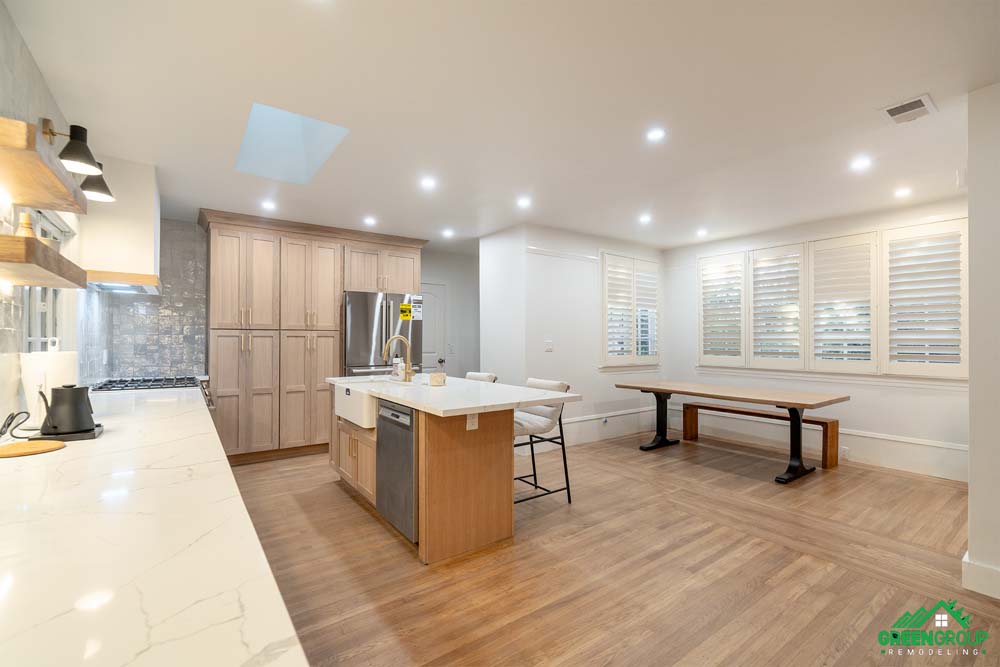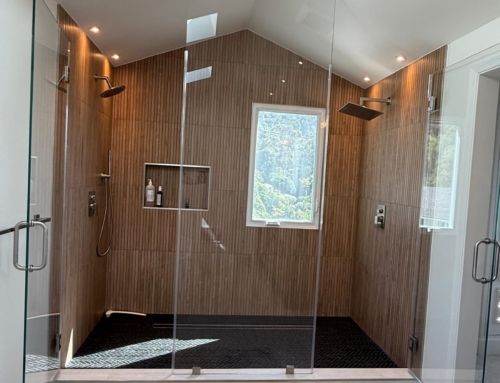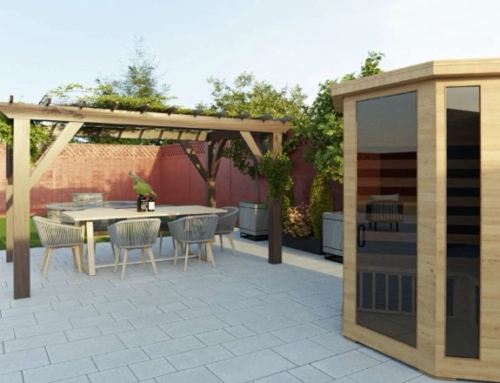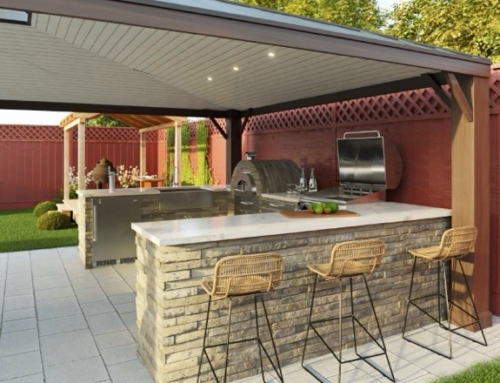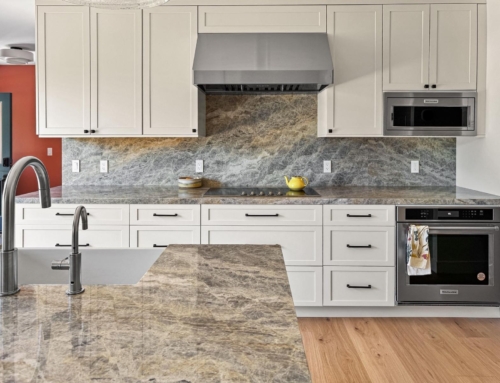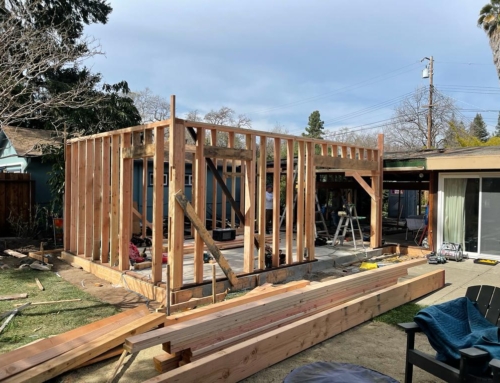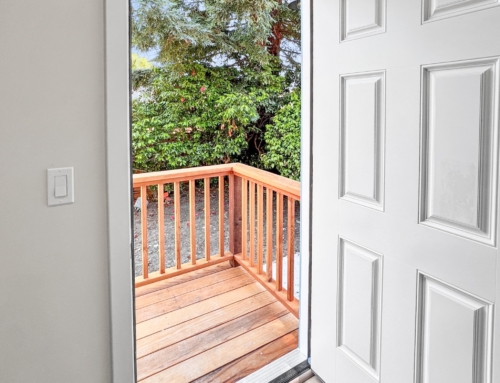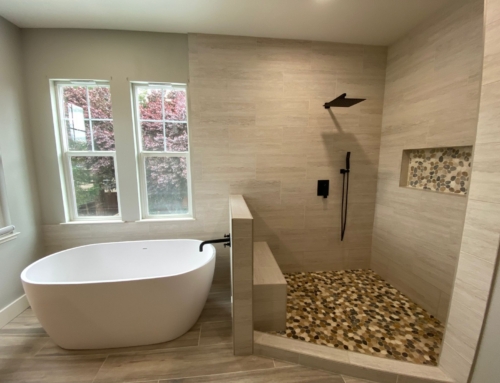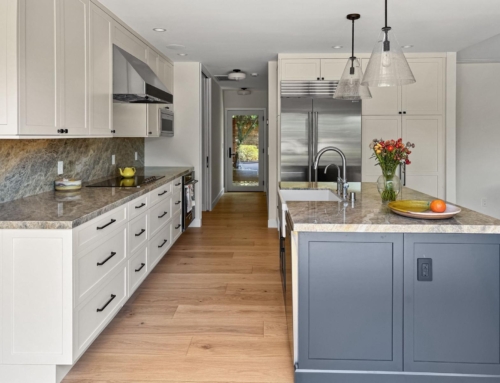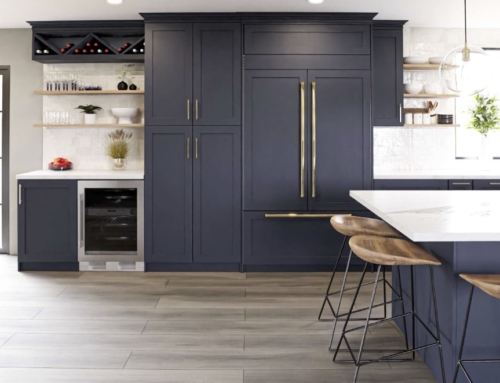In recent years, we’ve seen an increase in homeowners who prioritize eco-friendly materials to align with sustainable living practices. Flooring is a great area to do this in your renovations. When you choose sustainable wood floors it can significantly reduce environmental impact while enhancing the aesthetics and functionality of your home. With climate change and deforestation becoming urgent global concerns, opting for sustainable materials ensures that your renovation choices contribute to a greener future.
In this guide, we’ll explore some of the top sustainable wood flooring options that can transform your home while reducing your environmental footprint. From rapidly renewable bamboo to recycled reclaimed wood, sustainable flooring offers both style and durability. Let’s dive into the best eco-conscious wood flooring choices for homeowners seeking beauty and responsibility in equal measure.
What Makes Wood Flooring Sustainable
Sustainable wood flooring is defined by several key factors that prioritize environmental stewardship and responsible resource management. To be considered sustainable, the wood must be harvested in a way that protects forest ecosystems, minimizes waste, and supports reforestation. Certifications like those from the Forest Stewardship Council (FSC) or Programme for the Endorsement of Forest Certification (PEFC) ensure that the wood comes from responsibly managed forests. These certifications verify that the harvesting process follows practices that promote biodiversity, prevent deforestation, and protect wildlife habitats.
Another element of sustainability involves the carbon footprint associated with production and transportation. Locally sourced or reclaimed wood, for example, reduces the environmental impact by minimizing shipping emissions. Additionally, wood products processed with fewer chemical treatments and finishes contribute to better indoor air quality, making them healthier for homeowners.
Sustainability also extends to durability. Longer-lasting wood floors reduce the need for replacement, decreasing future consumption of materials. Some sustainable options, such as bamboo, are rapidly renewable, while reclaimed wood offers a second life to materials that would otherwise go to waste. By choosing sustainable wood flooring, homeowners not only enjoy beautiful, high-quality floors but also contribute to a healthier environment and future.
Top Sustainable Wood Flooring Options
Choosing sustainable wood flooring options ensures your home is both beautiful and environmentally responsible. Below are some of the top choices that align with green living principles:
1. Reclaimed Wood
Reclaimed wood gives new life to materials sourced from old buildings, barns, or industrial sites. This option prevents the need for new tree harvesting, reducing environmental impact. Reclaimed wood often features unique character, including natural weathering, knots, and nail holes, adding rustic charm to homes. Additionally, it promotes sustainability by keeping waste materials out of landfills.
- Best for: Homes seeking rustic aesthetics or vintage character.
- Environmental Benefits: Reduces landfill waste and eliminates the need for new wood.
2. Bamboo Flooring
Although technically a grass, bamboo acts as a durable and sustainable flooring option. It grows much faster than traditional hardwood trees, taking just 3-5 years to mature, compared to the decades needed for oak or maple. Bamboo flooring is known for its strength, resistance to moisture, and affordability. Look for brands certified by the FSC to ensure sustainable practices.
- Best for: High-traffic areas due to its durability.
- Environmental Benefits: Rapid regrowth and minimal pesticide use during cultivation.
3. Cork Flooring
Cork is harvested from the bark of cork oak trees, allowing the trees to continue growing and regenerating. Harvesting cork every nine years makes this an environmentally friendly choice. Cork floors offer softness underfoot, sound insulation, and natural resistance to mold, mildew, and pests, making them ideal for kitchens or bathrooms.
- Best for: Spaces requiring insulation and soundproofing.
- Environmental Benefits: Renewable and biodegradable, with minimal waste.
4. Engineered Wood from Sustainable Sources
Engineered wood is made from a thin veneer of real wood over layers of plywood, using fewer solid wood materials while still offering the look of hardwood. Opt for products certified by the FSC to ensure that the wood comes from responsibly managed forests. Engineered wood is ideal for homes needing moisture-resistant flooring, such as basements.
- Best for: Moisture-prone areas, including basements and kitchens.
- Environmental Benefits: More resource-efficient than solid hardwood.
5. Locally Sourced Hardwood
If you prefer traditional hardwood flooring, choosing locally sourced varieties like oak, maple, or walnut reduces the carbon footprint associated with transportation. Look for options certified by FSC or PEFC to ensure sustainable forestry practices. By choosing local wood, you support regional economies and reduce shipping emissions.
- Best for: Classic homes with a preference for traditional hardwood.
- Environmental Benefits: Minimizes transportation emissions and promotes local businesses.
Eco-Friendly Installation and Finishing Tips
Even the greenest wood flooring options can lose their environmental benefits if installed or finished improperly. Choosing sustainable practices during installation and finishing ensures your flooring remains as eco-friendly as possible.
Use Low-VOC Adhesives and Finishes
Volatile Organic Compounds (VOCs) are chemicals released by some adhesives, stains, and finishes, which can harm indoor air quality and the environment. Opt for low-VOC or water-based products to reduce harmful emissions. Finishes like natural oils, waxes, or plant-based polyurethanes are excellent alternatives to traditional varnishes and sealants. These products provide long-lasting protection without compromising air quality.
- Pro Tip: Look for adhesives and finishes with certifications like GREENGUARD or Green Seal, which guarantee low emissions.
Choose Floating Installation Techniques
Floating installations, which don’t require nails or glue, are a sustainable alternative for wood flooring. This method involves interlocking planks that “float” over an underlayment, making it easier to replace damaged boards and reuse materials during future renovations. Additionally, it reduces the need for toxic adhesives.
Opt for Recyclable Underlayment
Selecting eco-friendly underlayment materials, such as recycled felt or cork, can further minimize the environmental footprint. These materials offer soundproofing and insulation while being biodegradable or recyclable at the end of their lifespan.
Choose Sustainable Flooring for a Greener Future
Selecting sustainable wood flooring offers more than just aesthetic appeal—it contributes to a healthier planet and a greener lifestyle. From responsibly sourced materials to eco-conscious installation methods, each decision you make impacts your home and the environment. Whether you opt for bamboo, reclaimed wood, or FSC-certified hardwood, these choices reduce deforestation and carbon footprints, ensuring your home aligns with sustainable living principles.
With sustainable wood flooring, you also enjoy durable, timeless designs that enhance property value and indoor air quality. Making greener choices today paves the way for a more sustainable future. Explore the options, embrace eco-friendly practices, and transform your home into an environmentally conscious space.
Ready to upgrade your floors sustainably? Contact Green Group Remodeling to explore eco-friendly flooring solutions tailored to your needs!


